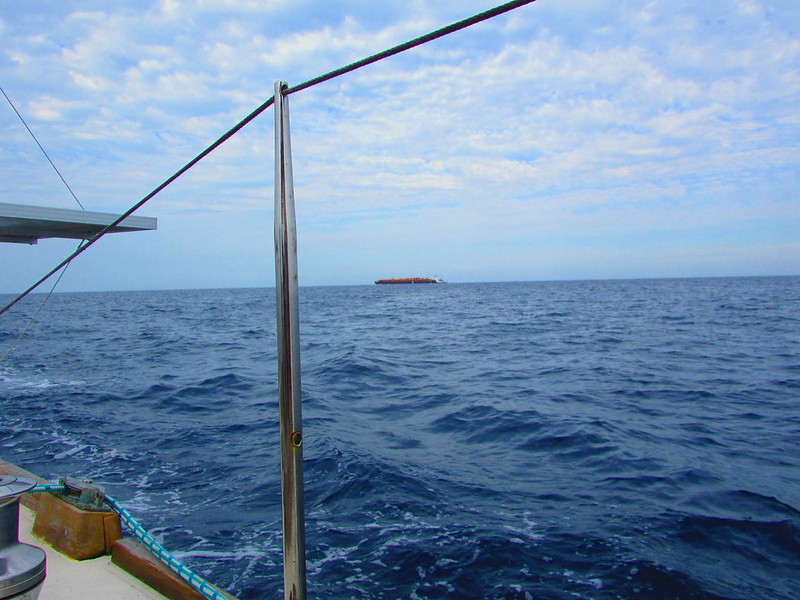The Gulf Stream is one of the most important and powerful ocean currents on Earth, playing a crucial role in shaping the climate of vast regions across the globe, particularly from the tropics to Europe. Stretching over 2,500 miles from the Gulf of Mexico up the eastern coast of the United States and across the Atlantic toward Europe, the Gulf Stream is more than just a river in the ocean—it is a vital force that moderates weather patterns, influences marine ecosystems, and even affects human activities from fishing to shipping. The current’s impact on climate, marine life, and even global politics cannot be understated, making it a key feature of the Atlantic Ocean’s environmental and economic systems.
This article delves into the science behind the Gulf Stream, how it forms, its role in climate regulation, its environmental significance, and the potential threats it faces from climate change. Understanding this oceanic powerhouse is key to appreciating the intricate balance of global climate systems.
What Is the Gulf Stream?
The Gulf Stream is a powerful, warm, and swift Atlantic Ocean current that originates in the Gulf of Mexico, flows along the eastern coastlines of the United States and Canada, and then veers northeast across the Atlantic Ocean toward Europe. This current is part of a larger system of currents known as the North Atlantic Gyre, which circulates water around the subtropical regions of the Atlantic. As one of the strongest ocean currents, the Gulf Stream transports an estimated 30 million cubic meters of water per second, which is more than 100 times the flow of the Amazon River.
The Gulf Stream is driven primarily by two forces: the rotation of the Earth (Coriolis effect) and wind patterns, particularly the trade winds and westerlies. The Coriolis effect causes the current to bend and flow along the coasts of the southeastern U.S. and then eastward across the Atlantic. The warm waters of the Gulf Stream flow northward, where they eventually cool and sink, contributing to the global system of oceanic currents known as the thermohaline circulation or the “global conveyor belt.”
How the Gulf Stream Forms
The Gulf Stream originates from the combination of several smaller currents in the Gulf of Mexico. The warm waters of the Caribbean Sea flow into the Gulf of Mexico through the Yucatan Channel, where they are joined by waters from the Loop Current. These waters are funneled through the Florida Straits between Cuba and the U.S., forming the core of the Gulf Stream as it flows along the southeastern U.S. coastline.
The Gulf Stream is not just a surface current; it extends deep into the ocean, with its effects being felt at depths of up to 4,000 feet. As it moves northward along the U.S. East Coast, the current merges with the North Atlantic Drift, which is responsible for transporting warm water toward the northern latitudes of Europe.
The Role of the Gulf Stream in Climate Regulation
One of the most significant impacts of the Gulf Stream is its ability to regulate the climate of the regions it touches. The current plays a key role in redistributing heat from the equator toward higher latitudes, thereby moderating temperatures and influencing weather patterns. This is particularly important for the climate of Europe, where the Gulf Stream helps to keep temperatures milder than they would otherwise be at such high latitudes.
1. The Tropics and North America
In the tropics, the Gulf Stream helps to carry heat away from the equatorial regions, where solar radiation is most intense, and transports it toward the northern latitudes. This process helps to prevent the tropics from becoming excessively hot and helps balance global temperatures.
Along the eastern seaboard of North America, the Gulf Stream creates a warm, moist environment that affects local weather patterns. The warm waters of the Gulf Stream contribute to the formation of hurricanes and tropical storms in the Atlantic, which are powered by the heat and moisture of the ocean surface. As these storms move northward along the Gulf Stream, they can bring intense rainfall and strong winds to the coastal regions of the U.S. and Canada.
However, the Gulf Stream also creates a clear temperature divide along the eastern U.S. coast. To the west of the current, the water remains much cooler due to the influence of the Labrador Current, while to the east, the Gulf Stream keeps the waters warm. This temperature contrast can lead to the development of weather fronts that affect the climate and precipitation patterns along the coast.
2. Europe: The Gulf Stream’s Influence on a Continent
Europe, particularly the western part of the continent, owes much of its relatively mild climate to the Gulf Stream and the North Atlantic Drift. Without this ocean current, the climate of Europe would be much colder and more extreme, similar to the climate found in regions of Canada and Siberia, which are located at similar latitudes.
The Gulf Stream’s warm waters help to moderate the climate of countries such as the United Kingdom, Ireland, France, Spain, and Norway, creating relatively mild winters and temperate summers. For example, London is located at a latitude similar to Calgary in Canada, yet its winters are significantly milder, thanks in large part to the heat transported by the Gulf Stream. Similarly, the coastal regions of Norway, which are much further north, enjoy ice-free ports and relatively temperate weather, allowing them to engage in year-round shipping and fishing activities.
The influence of the Gulf Stream on Europe’s climate has had significant historical and cultural impacts as well. The temperate climate has made Europe one of the most agriculturally productive regions in the world, and the mild winters have allowed for the development of densely populated cities and societies throughout history.
3. The Global Impact of the Gulf Stream
The Gulf Stream is not just important for the Atlantic basin; its effects are felt worldwide. The current is an integral part of the thermohaline circulation, also known as the global conveyor belt, which moves warm and cold water around the planet. This system helps regulate global temperatures, distribute nutrients throughout the oceans, and drive weather patterns across continents.
Any significant change in the Gulf Stream’s strength or path could have global consequences, potentially disrupting weather systems, altering rainfall patterns, and even contributing to more extreme weather events such as heatwaves, cold spells, and stronger storms.
Environmental Significance of the Gulf Stream
Beyond its role in climate regulation, the Gulf Stream is a crucial part of the Atlantic Ocean’s ecosystem. The warm waters of the Gulf Stream create a rich and diverse marine environment that supports a wide range of species, from plankton to large predators like sharks, whales, and tuna.
1. Marine Biodiversity
The Gulf Stream is home to a variety of marine life, including fish, marine mammals, and seabirds. Its warm waters are rich in nutrients, supporting the growth of phytoplankton, which forms the base of the marine food web. The abundance of plankton attracts small fish, which in turn attract larger predators such as tuna, marlin, and dolphins.
Migratory species such as sea turtles and whales use the Gulf Stream as a highway, following its path as they travel between breeding and feeding grounds. For example, loggerhead turtles hatch on the beaches of the southeastern U.S. and are carried by the Gulf Stream to the nutrient-rich waters of the North Atlantic, where they spend their early years feeding and growing.
The Gulf Stream also influences the distribution of fish species in the North Atlantic. The warm waters allow species like bluefin tuna and swordfish to thrive in areas that would otherwise be too cold. Commercial fisheries along the U.S. East Coast and in the North Atlantic benefit greatly from the presence of these warm-water species.
2. Impact on Coastal Ecosystems
The Gulf Stream’s influence extends beyond the open ocean and into coastal ecosystems. The warm waters of the Gulf Stream help to support vibrant coral reefs along the southeastern coast of the U.S. and the Caribbean. These reefs provide critical habitats for fish, invertebrates, and other marine organisms and play a key role in supporting local fishing and tourism industries.
However, the Gulf Stream’s warm waters can also exacerbate the effects of climate change on coral reefs, leading to coral bleaching events. As ocean temperatures rise, corals become stressed and expel the symbiotic algae that provide them with energy and their vibrant colors. This bleaching weakens the coral and can lead to widespread die-offs, with significant consequences for the entire ecosystem.
Climate Change and the Future of the Gulf Stream
While the Gulf Stream has been a stabilizing force in the Earth’s climate system for millennia, it is now facing threats from climate change. Scientists have observed that the Gulf Stream has been slowing down in recent decades, a trend that could have serious implications for both regional and global climate patterns.
1. The Slowing Gulf Stream
The Gulf Stream is part of the larger thermohaline circulation, which is driven by differences in water temperature and salinity. As warm water from the Gulf Stream travels northward, it cools and sinks, creating a conveyor belt that moves water around the globe. However, as polar ice melts and freshwater from Greenland’s ice sheets flows into the North Atlantic, the salinity of the ocean decreases. Freshwater is less dense than saltwater, which means it doesn’t sink as easily. This disrupts the process that drives the thermohaline circulation, potentially slowing down the Gulf Stream.
A slower Gulf Stream could have significant consequences for the climate. In Europe, it could lead to colder winters and more extreme weather, as the flow of warm water to the region diminishes. In the U.S., a weaker Gulf Stream could lead to stronger hurricanes and rising sea levels along the East Coast, as the current plays a role in keeping water levels lower in the region.
2. Rising Sea Levels
The Gulf Stream also plays a critical role in maintaining sea levels along the U.S. East Coast. The current helps to “push” water away from the coast, keeping sea levels lower than they would be without its influence. As the Gulf Stream weakens, this effect diminishes, leading to higher sea levels and an increased risk of coastal flooding, particularly during storms and hurricanes.
3. The Global Conveyor Belt and Climate Disruption
The thermohaline circulation is a critical part of the Earth’s climate system, helping to regulate temperatures and distribute heat around the globe. A disruption in this system could lead to more extreme weather patterns, including droughts, heatwaves, and stronger storms. Changes in the Gulf Stream could also impact the distribution of marine species, as warmer waters shift northward and colder regions become more inhospitable.
Conclusion: The Gulf Stream’s Importance in a Changing World
The Gulf Stream is not just an ocean current—it is a vital part of the global climate system, influencing weather patterns, marine biodiversity, and human livelihoods across vast regions. Its role in transporting heat from the tropics to Europe helps to moderate temperatures and maintain a stable climate. However, the Gulf Stream is now facing unprecedented challenges from climate change, with the potential for significant disruption.
Understanding the Gulf Stream and its role in shaping the climate of the Atlantic Ocean is essential for predicting and preparing for future changes. As the world continues to grapple with the effects of global warming, the fate of the Gulf Stream will be closely watched, as its changes could reverberate across the planet. Whether through global cooperation to reduce greenhouse gas emissions or the development of new technologies to monitor and adapt to a changing ocean, the Gulf Stream remains a crucial component of Earth’s environmental balance—and its preservation is key to our future.



